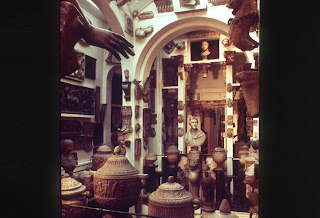Architecture Of The Enlightenment
What does Architecture of the Enlightenment mean?
It was a period known as the Age of Reason during which science, social and culture where at the for front of design. Architecture had to change to go along with the changing times. The architecture of this period was known as neoclassicism or rationalism. This were terms used for the changing times.
Architecture started to change from reflecting primarily
religious values to the sciences and what people needed. The architects that we
have been introduced to in this lecture help me understand what architecture of
the enlightenment really means and showed me the change from Gothic to this
period and how thinking was more important in design and religion started taking
a back seat.
When I investigated Enlightenment buildings, Sir John Soane’s
Museum in London came to mind. He was an English architect who helped design
the Bank of England. One of his most famous pieces is the Sir John Soane’s Museum
London. This building is incredibly unique as it started out as one building,
Number 12 Lincoln’s Inn Field. When he acquired
this building, he rebuilt it as a home where he could show his art collection. Over
time he required number 13 and 14. He designed this building to use the light
to show of his collection of different artworks. Not only was it his home he
also used the top floor room as a classroom to teach his architectural students.
I believe this building is truly relevant to this subject as
it shows that he considered many aspects and influences of architecture. He wanted
to create a space where culture and social change was welcome. To keep this
alive, when he passed, his requested that the museum have free entry to the
public so that people could continue to learn from his collection and design.
Information Reference
https://www.soane.org/about/our-history





Comments
Post a Comment